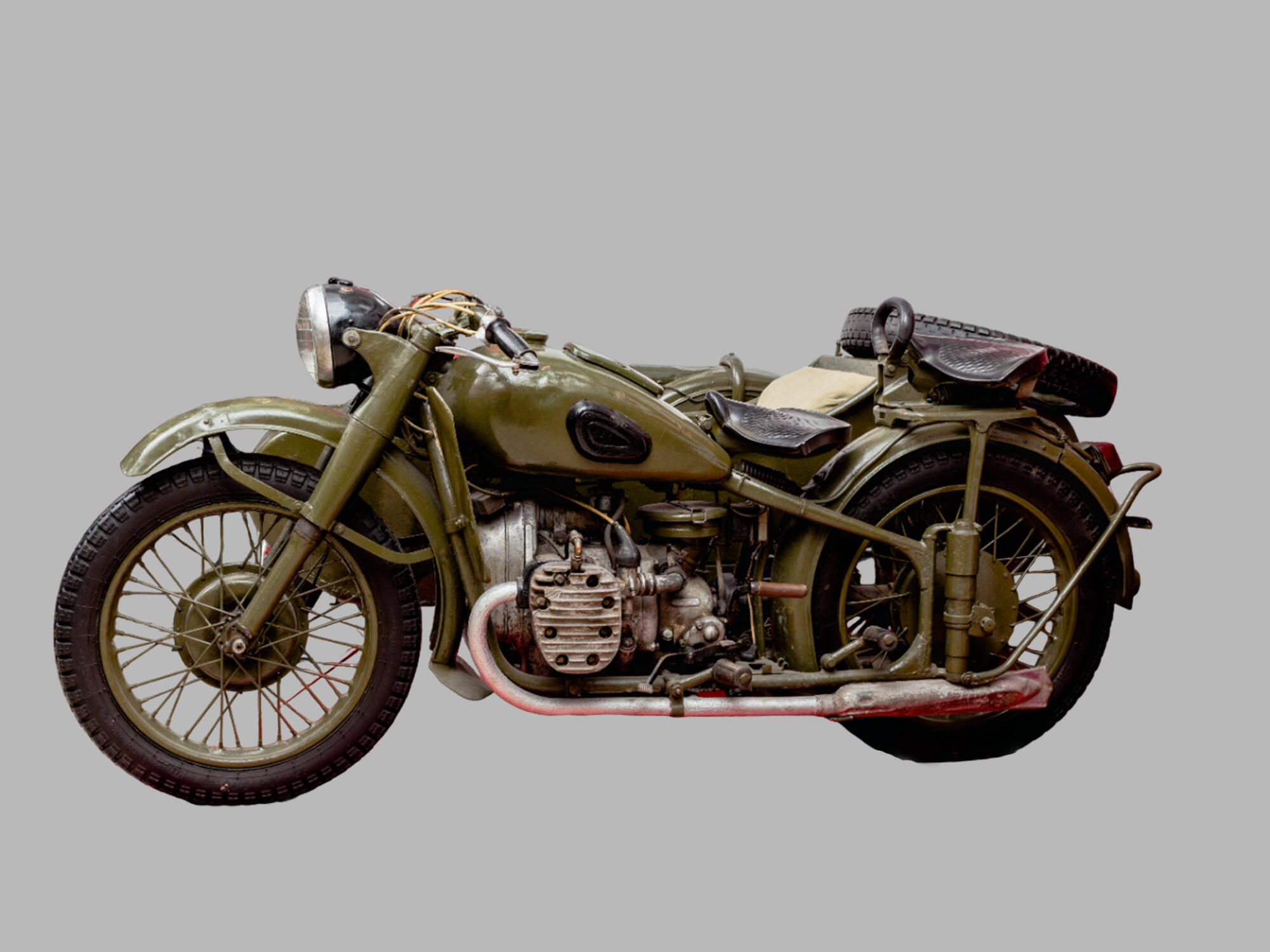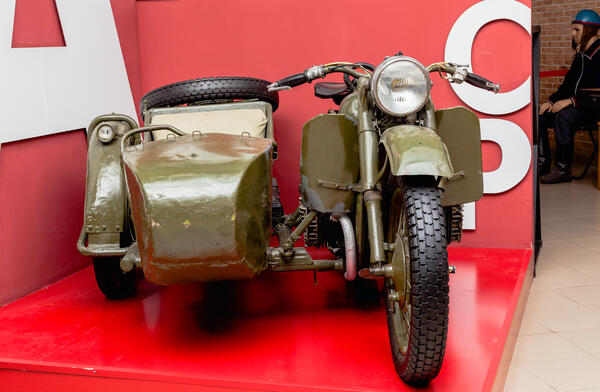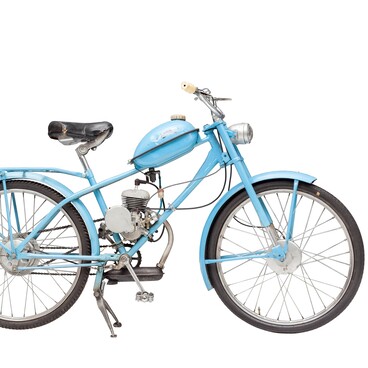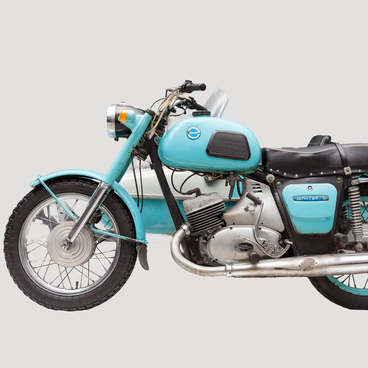The M-72 heavy motorcycle was mass-produced in the Soviet Union between 1941 and 1960. The motorcycles were manufactured at motorcycle factories in Moscow, Irbit, and Kyiv, as well as the Sickle and Hammer Plant in Kharkiv, the GMZ in Gorky (Nizhny Novgorod), and the Krasny Oktyabr Plant in Leningrad (St. Petersburg).
Initially, the motorcycle was designed for military use only and was not commercially available until the mid-1950s. Each M-72 motorcycle was equipped with portable firearms, which is why it was classified as an armored vehicle by the Main Agency of Automobiles and Tanks of the Soviet Army.
The motorcycle was produced both with and without a sidecar. Its design was based on the German BMW R71 that was secretly purchased and delivered to the Moscow Motorcycle Plant where the production of the new model was organized.
After the beginning of the Great Patriotic War, the Moscow Plant was evacuated to Irbit. This was also where the design bureau under Alexander Fyodorov was established. The designers included Igor Okunev and Wilhelm Beckmann. Sergey Karzinkin and Boris Zefirov were placed in charge of testing the motorcycle.
In early 1942, the first batch of the M-72 motorcycles was sent to the front lines from Irbit. After the war, the Irbit Motorcycle Plant scaled up the production, supplying its machines both for export and the domestic market.
This was the first heavy motorcycle in the Soviet Union. It was modernized in several steps: in 1949, it was equipped with a dual air filter, and in 1952, it received the new G11A generator.
The M-72 motorcycles had the same design and even badge regardless of whether they were produced in Moscow, Irbit, Leningrad, Kharkiv, or Gorky. The Irbit version for the commercial market was equipped with an improved engine, stronger wheels and frame, as well as a new color scheme and the inscription “Irbit” on the fuel tank.
All civilian motorcycles had to be registered with the military commissariat so that they could be requisitioned for the army in case of war. This model was also used to develop sports versions. In total, 8,500 M-72 motorcycles were produced.
Initially, the motorcycle was designed for military use only and was not commercially available until the mid-1950s. Each M-72 motorcycle was equipped with portable firearms, which is why it was classified as an armored vehicle by the Main Agency of Automobiles and Tanks of the Soviet Army.
The motorcycle was produced both with and without a sidecar. Its design was based on the German BMW R71 that was secretly purchased and delivered to the Moscow Motorcycle Plant where the production of the new model was organized.
After the beginning of the Great Patriotic War, the Moscow Plant was evacuated to Irbit. This was also where the design bureau under Alexander Fyodorov was established. The designers included Igor Okunev and Wilhelm Beckmann. Sergey Karzinkin and Boris Zefirov were placed in charge of testing the motorcycle.
In early 1942, the first batch of the M-72 motorcycles was sent to the front lines from Irbit. After the war, the Irbit Motorcycle Plant scaled up the production, supplying its machines both for export and the domestic market.
This was the first heavy motorcycle in the Soviet Union. It was modernized in several steps: in 1949, it was equipped with a dual air filter, and in 1952, it received the new G11A generator.
The M-72 motorcycles had the same design and even badge regardless of whether they were produced in Moscow, Irbit, Leningrad, Kharkiv, or Gorky. The Irbit version for the commercial market was equipped with an improved engine, stronger wheels and frame, as well as a new color scheme and the inscription “Irbit” on the fuel tank.
All civilian motorcycles had to be registered with the military commissariat so that they could be requisitioned for the army in case of war. This model was also used to develop sports versions. In total, 8,500 M-72 motorcycles were produced.




